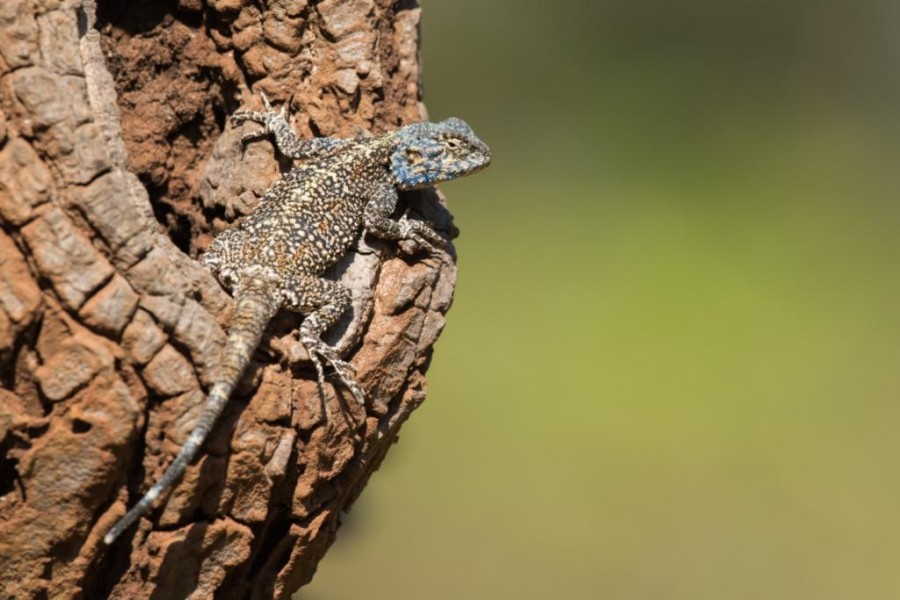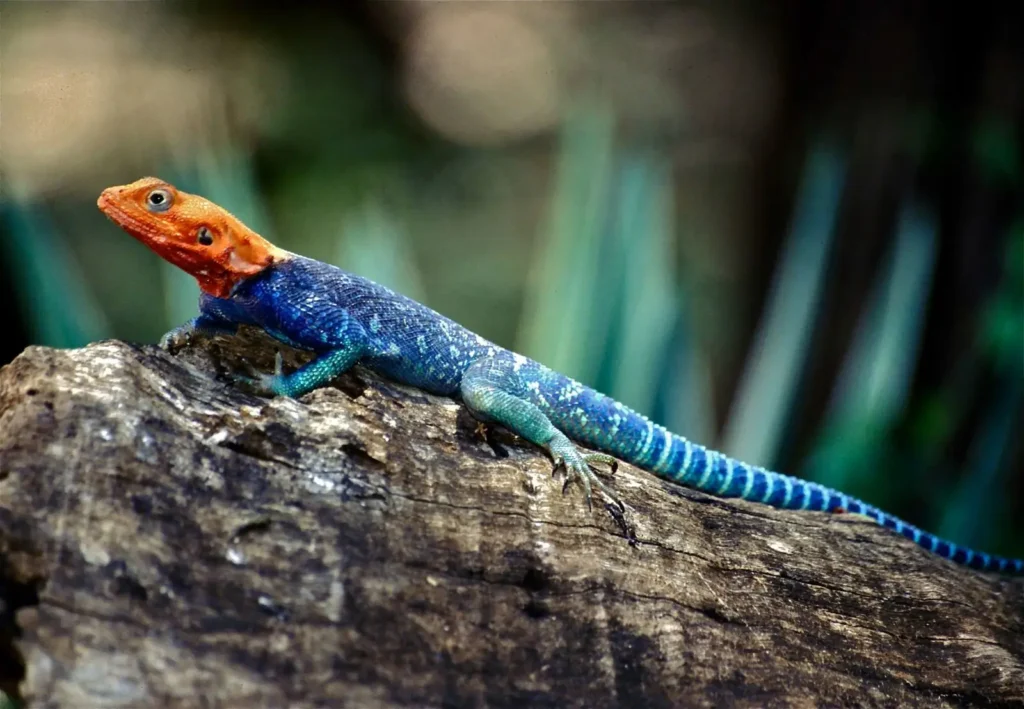Among the reptiles of Africa common agama (Agama agama) is one of the most striking and interesting lizards. the color changes depending on the mood, temperature and season, and the behavior demonstrates remarkable agility and social organization.
Agamas have perfectly adapted to life in cities and the natural environment. They can easily climb walls and trees, and can also run fast on their hind legs to escape predators. In this article, we will consider their anatomy, habitat, lifestyle, reproduction, nutrition, protection from enemies and significance for humans.

Scientific classification
🔬 Classification of agama vulgaris:
✔ The Kingdom: Animals (Animalia)
✔ Type: Chordal (Chordata)
✔ Class: Reptiles (Reptilia)
✔ Row: Scaly (Squamata)
✔ Family: Agam trees (Agamidae)
✔ Gender: Agama
✔ View: Common agama (Agama agama)
📌 Interesting!
Title Agama it comes from Latin, which means “lizard”, and agama agama indicates its typical distribution and general appearance.
Appearance and body structure
💠 Main Features:
• Length: from 13 to 30 cm (together with the tail).
• Weight: about 80-150 g.
• Color scheme: it varies depending on the sex, age, and condition of the animal.
* Males in the mating season have bright orange or red head, blue body and dark tail.
* At rest-brown-gray with dark spots.
* Females and juveniles – sand or brown color.
• Skin: rough, scaly, with small spikes on the back.
• Chairman: triangular, with large eyes and movable eyelids.
• Paws: strong, with sharp claws that help to climb on vertical surfaces.
📌 Interesting!
Agama can change color not only for masking, but also to communicate with other lizards and express emotions.

Habitat and range
🌍 Where does the common agama live?
* Common in Sub-Saharan Africa, especially in Senegal, Nigeria, Cameroon, Ghana, Sudan and Kenya.
* Lives in savanna, semi-desert, rainforest, as well as in urban areas.
* Selects rocky areas, trees, fences, building walls - everything where you can bask comfortably in the sun.
📌 Interesting!
The common agama has adapted perfectly to life among humans and is often found in African cities, where it lives on the roofs and walls of buildings.
Lifestyle and behavior
🔹 Social structure
* Agamas – territorial animalsforming groups of a dominant male, several females, and young individuals.
* The dominant male guards his territory by using bright coloring, threatening head movements and quick push-ups.
🔹 Activity
* Lead daytime lifestyle, actively bask in the sun.
* At night, they hide in crevices between rocks or in burrows.
🔹 Protection from predators
* In case of danger, agama can run fast on your hind legswhich makes it look like a miniature dinosaur.
* Hides in cracks, between rocks, or in trees.
* If the enemy attacks, agama inflates the body and changes colortrying to look bigger and more dangerous.
📌 Interesting!
If agama will lose its tail, it will grow back over time, although it will be shorter and somewhat modified in shape.
Reproduction
💡 How do agamas reproduce?
* The mating season falls on rainy season (when there is a lot of food).
* Males lead aggressive fights for territory and femalesby swinging your head and doing push-ups.
* The female lays eggs 5 to 12 eggs into a shallow hole in the ground.
* Incubation continues 8-10 weeks, after which small agamas with a length of hatch 5-7 cm.
📌 Interesting!
Small agamas are independent from the moment of birth and can climb and run on the first day!
Nutrition and environmental role
🍽 What does agama eat?
* Basic diet – insects and invertebrates (flies, beetles, termites, grasshoppers).
* Also eats fruits, seeds, leaves, small lizards and spiders.
🌱 Role in nature
* Controls the population harmful insects.
* Serves as food for predators (snakes, birds of prey, mammals).
📌 Interesting!
Agamas can even hunt for venomous spiderssuch as the Black Widow, due to its resistance to certain types of poison!

Agama vulgaris that man
👤 Relationship with a person
* In Africa, it is considered useful animalsbecause it destroys pests.
* Sometimes held in at home conditions like a decorative lizard.
* In some cultures, it is considered a symbol of endurance.
⚠ Threats to the species
* Habitat loss due to urbanisation.
* Trapping exotic animals for sale on the market.
📌 Interesting!
Agamas are very hardy and easily adapt to changes in the environment, so their population it is not under threat of extinction.
Conclusion
Agama vulgaris is an energetic, agile and intelligent lizardIt plays an important role in nature and pleases people with its bright color and interesting habits. It is a perfect example of how animals can adapt to changes and survive in a wide variety of environments.